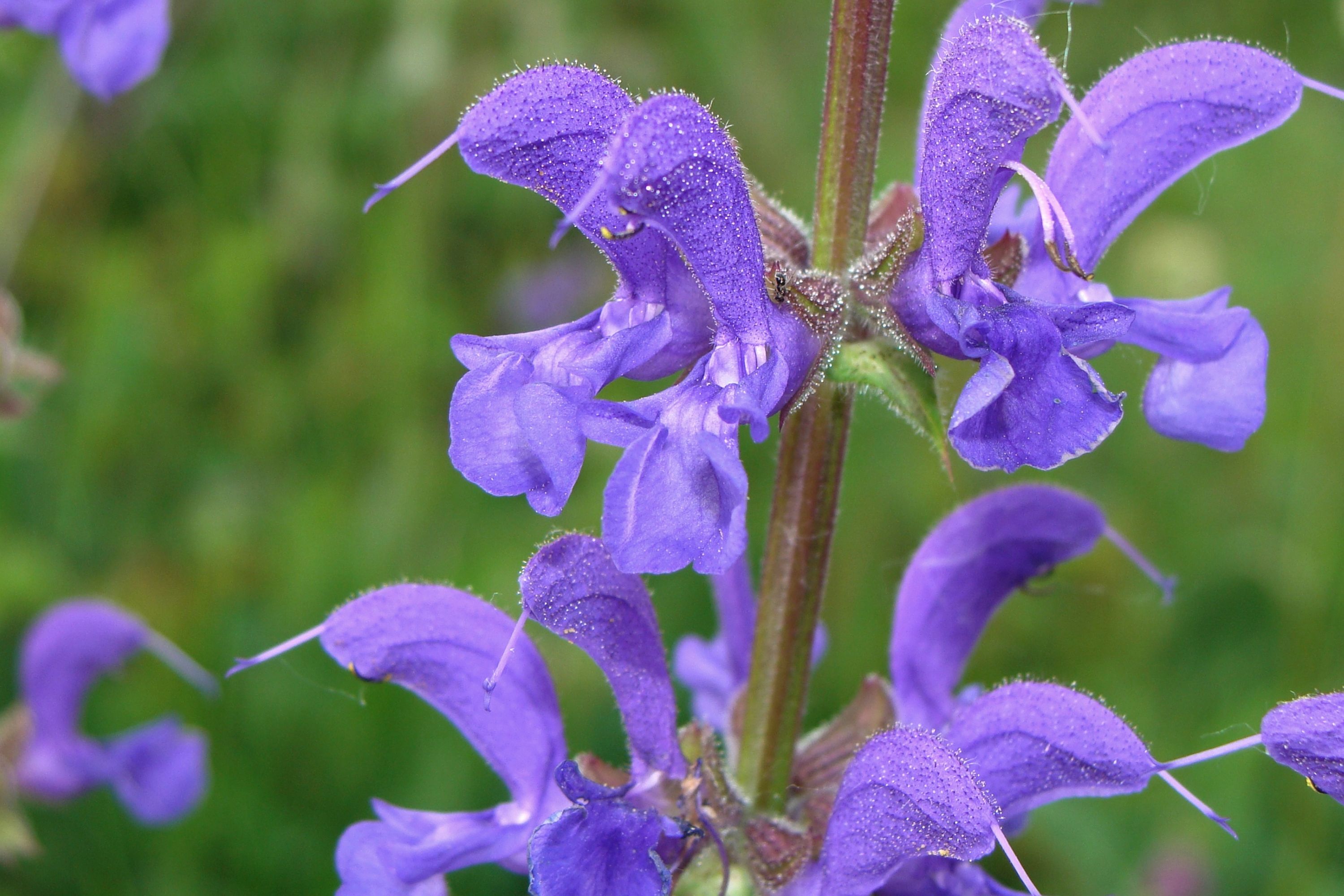Meadow sage
(Salvia pratensis)

Description
Salvia pratensis, commonly known as Meadow Sage or Blue Sage, is a herbaceous perennial plant belonging to the family Lamiaceae. It is native to Europe and western Asia, where it is found in meadows, grasslands, and along roadsides. This plant has become a popular garden plant in many parts of the world due to its attractive blue-purple flowers and easy-to-grow nature. In this article, we will delve deeper into the characteristics, cultivation, and usage of Salvia pratensis. Characteristics: Salvia pratensis is a clump-forming plant that typically grows to a height of 50 to 70 cm (20 to 28 inches) and a spread of 30 to 50 cm (12 to 20 inches). It has an upright habit with sturdy, square stems that are hairy and branched. The leaves are ovate or lance-shaped, grayish-green, and hairy on the undersides. They are arranged in pairs, with the lower leaves being larger than the upper ones. The flowers of Salvia pratensis are produced on long, erect spikes that arise from the axils of the upper leaves. The blooms are tubular with two lips, and are typically blue or purple, although they can also be pink or white. The flowering period for Salvia pratensis is from late spring to early summer, with the blooms lasting for several weeks. The flowers are highly attractive to bees, butterflies, and other pollinators, making this plant an excellent addition to any wildlife-friendly garden. Cultivation: Salvia pratensis is a very adaptable plant that grows well in a variety of soil types, although it prefers well-drained soils that are rich in organic matter. It can tolerate both full sun and partial shade, but will flower more profusely in full sun. This plant is hardy to USDA zones 4 to 8, making it suitable for a wide range of climates. Propagation of Salvia pratensis can be done by seeds, division, or stem cuttings. Seeds should be sown in the spring or autumn, either directly into the ground or into pots. Division can be done in the spring or autumn by carefully lifting the plant and dividing the root ball into smaller sections. Stem cuttings can be taken in late spring or early summer and rooted in a potting mix. Maintenance of Salvia pratensis is relatively easy, requiring little more than occasional watering and fertilization. Deadheading spent flowers will encourage more blooms to form, while cutting back the plant in late summer will promote new growth and prevent it from becoming too leggy. Usage: Salvia pratensis has a number of different uses, both ornamental and medicinal. In the garden, it is an excellent choice for borders, meadow plantings, and wildlife-friendly gardens. It can also be used in containers, provided they are large enough to accommodate its size. Medicinally, Salvia pratensis has been used for centuries as a herbal remedy for a variety of ailments. It contains a number of active compounds, including tannins, flavonoids, and essential oils, that are believed to have anti-inflammatory, antioxidant, and antimicrobial properties. It has been used to treat a range of conditions, including headaches, digestive disorders, and respiratory infections. Conclusion: Salvia pratensis is a versatile and attractive plant that is well-suited to a wide range of garden styles and conditions. Its ease of cultivation and numerous uses make it an excellent choice for both novice and experienced gardeners alike. With its stunning blooms and wildlife-friendly nature, Salvia pratensis is sure to be a highlight of any garden.
Taxonomic tree:







